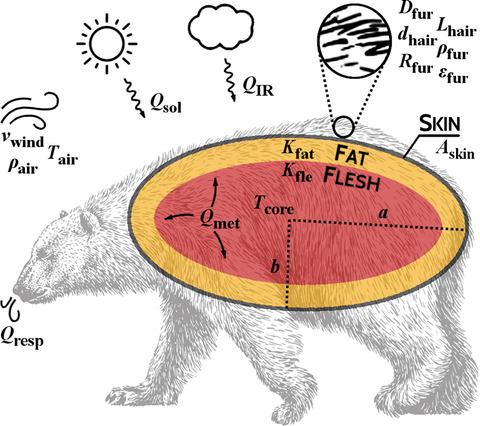当前位置:
X-MOL 学术
›
Funct. Ecol.
›
论文详情
Our official English website, www.x-mol.net, welcomes your feedback! (Note: you will need to create a separate account there.)
Where do functional traits come from? The role of theory and models
Functional Ecology ( IF 5.2 ) Pub Date : 2021-05-15 , DOI: 10.1111/1365-2435.13829 Michael R. Kearney 1 , Marko Jusup 2 , Melodie A. McGeoch 3 , Sebastiaan A. L. M. Kooijman 4 , Steven L. Chown 5
中文翻译:

功能特征从何而来?理论和模型的作用
更新日期:2021-07-07
Functional Ecology ( IF 5.2 ) Pub Date : 2021-05-15 , DOI: 10.1111/1365-2435.13829 Michael R. Kearney 1 , Marko Jusup 2 , Melodie A. McGeoch 3 , Sebastiaan A. L. M. Kooijman 4 , Steven L. Chown 5
Affiliation

|
- The use of traits is growing in ecology and biodiversity informatics, with initiatives to collate trait data and integrate it into biodiversity databases. A need to develop better predictive capacity for how species respond to environmental change has in part motivated this focus. Functional traits are of most interest—those with a defined link to individual survival, development, growth and reproduction.
- Non-trivial challenges arise immediately in deciding which functional traits to prioritise and how to characterise them. Here we discuss the advantages of a theoretical perspective for defining functional traits in the context of dynamical systems models of energy and mass exchange that link organisms to their environments. We argue that the theoretical frameworks upon which such models are built (biophysical ecology, metabolic theory) provide clear criteria to decide upon functional trait definitions, measurement requirements and associated metadata, via their mathematical connection to model parameters and state variables, and thus to system performance (survival, development, growth and reproduction).
- We distinguish ‘descriptive’ traits from ‘functional’ traits by dividing the latter into four classes—parameter, model, threshold and estimation—according to whether they are model parameters, define model structure, are threshold state variables or can be used to estimate model parameters.
- We develop a decision tree for this classification and illustrate it in the context of mammalian heat exchange but emphasise the scheme's generality to any kind of organism.
- We show how a theoretical perspective may change how we prioritise traits for collection and databasing in ways that are not necessarily more difficult to achieve, especially with new technologies, and provide clear guidance for requisite metadata. The use of theoretically driven criteria for prioritising the collection of functional trait data will maximise the generality, quality and consistency of trait databases for comparative analyses. Such databases will simultaneously facilitate the development of integrated predictive modelling frameworks across multiple organisational scales from individuals to ecosystems.
中文翻译:

功能特征从何而来?理论和模型的作用
- 在生态学和生物多样性信息学中,性状的使用正在增加,并采取了整理性状数据并将其整合到生物多样性数据库中的举措。需要开发更好的物种如何响应环境变化的预测能力,这在一定程度上激发了这种关注。功能特征是最令人感兴趣的——那些与个体生存、发展、生长和繁殖有明确联系的特征。
- 在决定优先考虑哪些功能特征以及如何表征它们时,立即出现了非平凡的挑战。在这里,我们讨论了在将生物体与其环境联系起来的能量和质量交换动态系统模型的背景下定义功能特征的理论视角的优势。我们认为,构建此类模型的理论框架(生物物理生态学、代谢理论)提供了明确的标准,通过它们与模型参数和状态变量的数学联系来决定功能特征定义、测量要求和相关元数据,从而与系统性能(生存、发育、生长和繁殖)。
- 我们将“描述性”特征与“功能”特征区分为四类——参数、模型、阈值和估计——根据它们是否是模型参数、定义模型结构、是阈值状态变量或可用于估计模型参数。
- 我们为此分类开发了一个决策树,并在哺乳动物热交换的背景下对其进行了说明,但强调了该方案对任何种类生物的普遍性。
- 我们展示了理论视角如何以不一定更难以实现的方式改变我们优先收集和数据库特征的方式,尤其是使用新技术,并为必要的元数据提供明确的指导。使用理论驱动的标准来优先收集功能性状数据将最大限度地提高用于比较分析的性状数据库的通用性、质量和一致性。这些数据库将同时促进从个人到生态系统的多个组织规模的集成预测建模框架的开发。


























 京公网安备 11010802027423号
京公网安备 11010802027423号